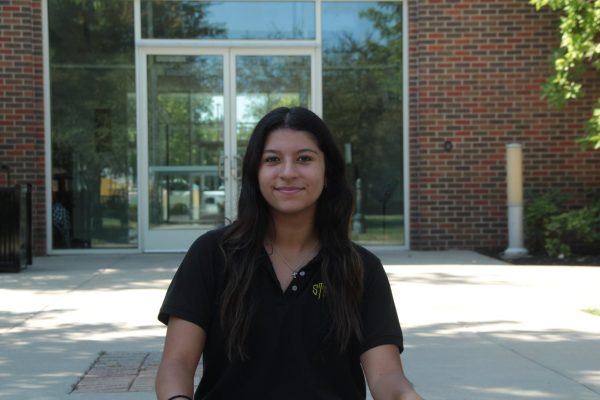The True Power of “Avatar”’s Elements
After its resurgence during the pandemic lock-down, “Avatar: The Last Airbender” gained a whole new meaning and message of hope as I rewatched it.
September 26, 2020
“Water. Earth. Fire. Air. Long ago, the four nations lived together in harmony. Then, everything changed when the Fire Nation attacked.” You may recognize this legendary opening from the Nickelodeon animated show, “Avatar: The Last Airbender.” Recently, this show was re-released on Netflix, where it gained an unbelievable resurgence—reaching the number one show spot in almost a week. The cartoon that originally aired in 2005 was a staple piece of many childhoods, including mine, but I had no idea how powerful the show’s themes truly were until I re-watched it over quarantine.
In a world where mortals can control the elements, an airbender named Aang has been selected as the avatar, making him the master of all four natural elements: fire, air, earth and water. He was missing in action for 100 years, and returns to a world that has been divided due to the Fire Nation taking control and implementing a dictatorship regime. Aang and his friends have to defeat the firelord to restore balance to the world.
I experienced a whole different perspective on the show than I had almost 10 years ago. A story that’s branded as a kids show is exactly the opposite; it’s a discussion of the voice of people against tyrannical rulers, all while exposing their viewers to under-represented cultures. Granted, its animation and humor made me love it as a kid, but now it acts as a supportive voice in such an unprecedented political atmosphere.
The show pulls from different indigenous and Asian cultures for its scenery and character foundation. The water benders are directly influenced by the Intuit culture, which is rarely seen in mass media today. The air benders—otherwise known as air nomads—draw heavily from Buddhists and Shaolin Monks, which is displayed through their practices of meditation, and physical attributes of robes and bald heads.
Examples of Asian influence come from the earthbenders whose culture is pulled from China, for example, the clothing is pulled from the Qing Dynasty. The fire nation is dominated by imperial Japanese influence, with themes of nationalism and government propaganda stemming from the fire benders. Their style of bending comes from the Northern Shaolin—a system of dynamic footwork—to represent the power in their bending (Barron News).
The cultural representation within “Avatar: The Last Airbender” is accurately portrayed, which makes it unbelievably important. Western media lacks indigenous and eastern representation, and if representation is given, it is usually inaccurate. A perfect example of this is Disney’s “Pochahontas”, where her indigenous story is skewed from historical and physical accuracies. Exposure to these cultures through great characters and storylines is one aspect of not only why “Avatar” was so great, but ahead of it’s time—which may be a facet to its resurgence.
The climax of the show is the revolution against the Fire Nation. People from across all elements come together to overthrow the oppressive authority with the help of the avatar. The avatar defeats the Fire Lord in an epic battle, taking away his bending abilities instead of killing him, and the Fire Lord’s son is crowned as the new emperor of the fire nation. Together, him and the Avatar reunite the broken world and create peace, something I hope for our current divided world.
The ultimate goal of the avatar is to restore balance within their lifetime. I rewatched Avatar throughout May and June, which aligned with the mainstream prominence of the Black Lives Matter movement. Our country has had a growing political divide for a while now, but during a time of a politicized pandemic, the BLM movement invigorated my disappointment in our current presidential administration.
“Avatar” provided a sense of hope that the peoples’ voices can be truly heard, represented through the climactic revolution against the Fire Nation and achieving diplomacy in the aftermath. I believe these messages apply to the current distrust in our bipartisan political system. Our country is divided, now more than I’ve seen in my lifetime, and I hope that like in “Avatar”, we can overcome our differences to find a collective good and prosper as one people.













Melanie cohn • Sep 28, 2020 at 12:57 am
I love this piece!! Well done 10/10. STA has one amazing editor. Can’t wait for more like this?